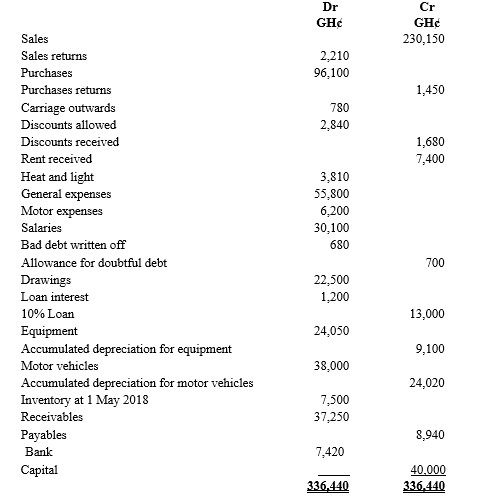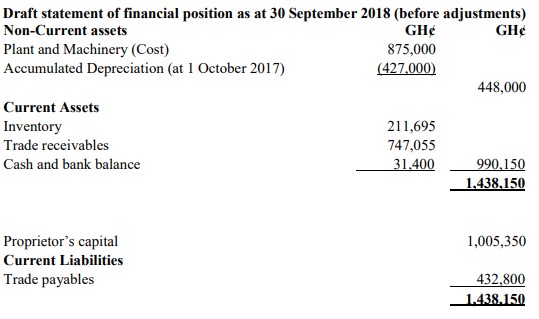a) IASB Conceptual Framework underpins what IFRS say and why they identify a particular accounting treatment. Another important aspect of the conceptual framework is an attempt to define “high quality” information or in other words, what makes financial information useful.
Required:
Explain in accordance with the IASB’s Conceptual Framework the enhancing qualitative characteristics of useful financial accounting information.
(10 marks)
b) On 1 January 2021, Koo Nimo, a trader, had the following entries in his ledger:
| Account |
Amount (GHȼ) |
| Commission received (owing) |
900 |
| Stationery (owing) |
400 |
| Rates (prepaid) |
600 |
The following information relates to the financial year ended 31 December 2021. All transactions were by cheque.
i) Commission received was as follows:
| Date |
Amount (GHȼ) |
| 14 January |
850 |
| 16 November |
3,200 |
On 31 December 2021 GHȼ800 was still owing in commission to Koo Nimo for the 2021 financial year.
ii) Stationery was paid as follows:
| Date |
Amount (GHȼ) |
| 19 January |
800 |
| 13 November |
4,200 |
On 1 January 2021 there was no stock of stationery, while at 31 December 2021 stock of stationery was GHȼ200. There were no outstanding invoices for stationery at 31 December 2021.
iii) Rates were paid as follows:
| Date |
Amount (GHȼ) |
| 9 April |
2,600 |
| 24 November |
2,800 |
A refund for rates of GHȼ800 was received on 15 December 2021. At 31 December 2021 rates were overpaid by GHȼ250.
Required:
Prepare the commission received, stationery and rates ledger accounts, including in each case the transfer to the Statement of Profit and Loss, for the year ended 31 December 2021, and the balance carried down to the next financial year.
(6 marks)
c) Explain TWO (2) reasons why a business entity will make adjustments for accruals and prepayments in the final accounts.
(4 marks)




